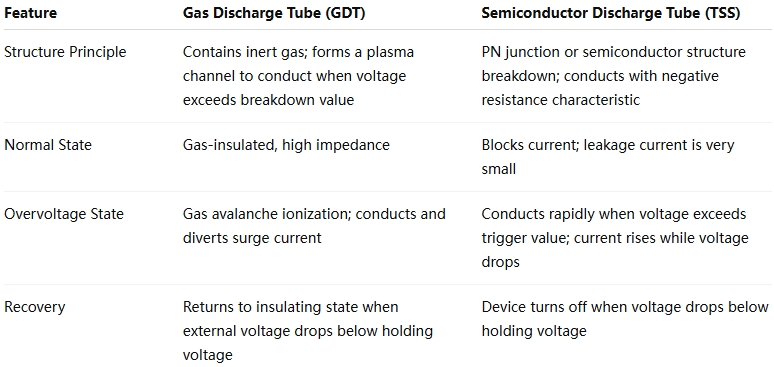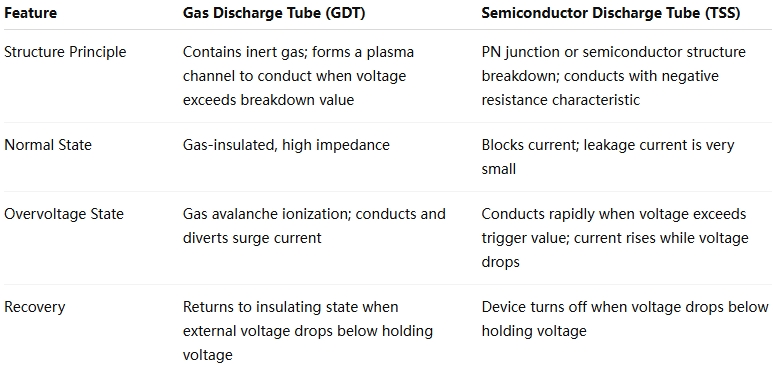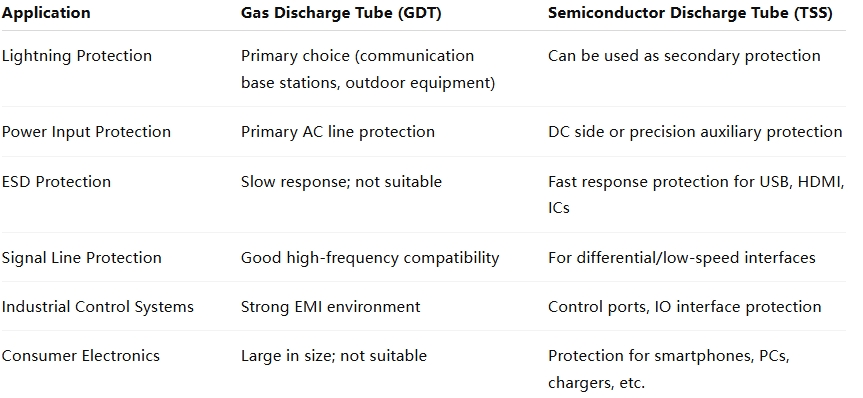⚡Are you choosing the right overvoltage protection components?
In communication base stations, power supply equipment, industrial control systems, or consumer electronics, lightning strikes, surges, and electrostatic discharge (ESD) can instantly damage sensitive components. Choosing the right overvoltage protection device can effectively reduce the risk of equipment failure.
This article will provide an in-depth comparison of the operating principles, product features, and typical application scenarios of gas discharge tubes (GDTs) and semiconductor discharge tubes (TSSs), helping engineers quickly select the right device.
1️⃣ Working Principle Comparison

⚡ Tip: GDT is a voltage-triggered switch, suitable for high-current lightning protection; TSS responds quickly, ideal for precision circuits and signal line protection.
2️⃣ Product Features Comparison

3️⃣ Typical Application Scenarios Comparison

4️⃣How to choose?
High-current surge/lightning ➡️ GDT
Precision signal/fast ESD protection ➡️ TSS
5️⃣ FAQ
Q1: What is the biggest difference between GDT and TSS?
GDT is suitable for high-current lightning protection with slow response; TSS is suitable for low-current, high-speed signal protection with fast response.
Q2: Can TSS withstand lightning?
Its standalone capability is limited; it is recommended as secondary protection combined with GDT.
Q3: Does GDT have polarity?
Most are bidirectional and polarity-free, suitable for AC lines.
Learn more about GDT and TSS products👇
https://en.semiware.com/products/general-thyritor/
https://en.semiware.com/products/general-gas-tube
We offer professional technical support and can design a complete protection solution tailored to your circuit.Get in touch with us now!➡️Sales29@semiware.com
Related Products


Comments (0)